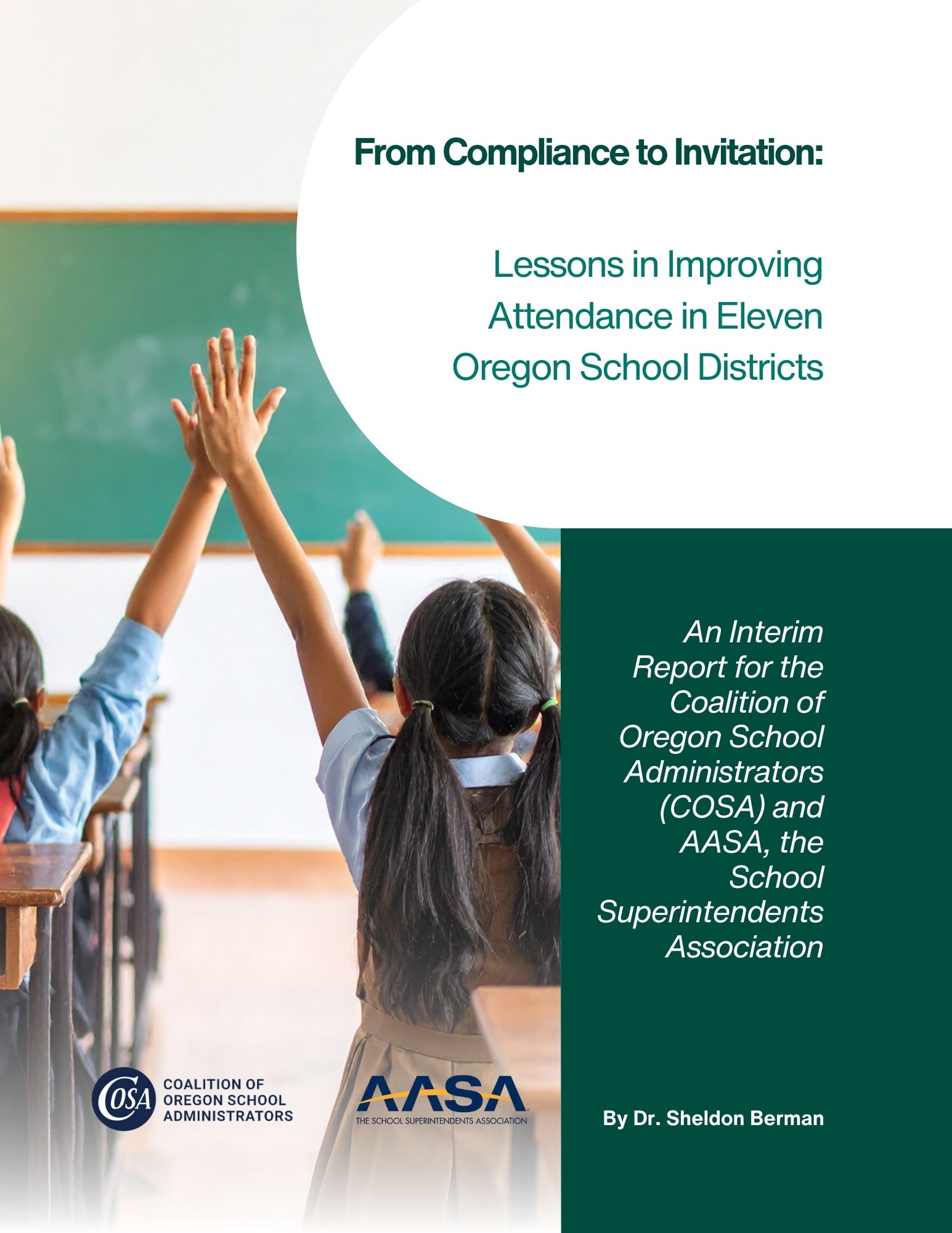You are here
From Compliance to Innovation
In the post-COVID years, districts across the country have seen their attendance rates plummet and with them the performance of students. Absenteeism not only compromises the performance of students who are chronically absent but also affects the performance of all students, as it disrupts classroom instruction when teachers must reteach concepts and skills and devote additional time to working with those who have missed instruction. Although there have been some improvements since the pandemic, the rates of chronic absenteeism have been far too high. For the 202324 school year, Oregon’s chronic absenteeism rate was 34.1%, that is, one in every three students in Oregon were chronically absent.
Intervening to improve attendance is in the interest of every district in Oregon, not only to enhance the well-being and academic success of children but to meet the statewide improvement targets. K-12 attendance is already one of common metrics upon which districts are assessed. With the passage of SB 141, the Education Accountability Act of 2025, K-2 regular attendance rates will become a second attendance metric in the state-wide system with each district expected to make targeted improvement gains. It is evident that without making gains in attendance it will be difficult to make gains in many of the other metrics.
In January 2024, with assistance from AASA, Oregon was able to launch a cohort of districts that were willing to work together to try to address the attendance problem. Thirteen districts joined the collaborative, varying in size from under 50 to 37,000. The districts met monthly online and several times in person to discuss strategies and share initiatives with each other. Each district formed attendance data teams, enhanced their attendance monitoring systems, pursued a variety of communication strategies, promoted the building of strong teacher-student relationships, and engaged in collective efficacy efforts focused on attendance among faculty and staff. The majority of districts made modest gains based on their initial efforts during the 2023-24 school year. However, because the major efforts of the districts took place during the 2024-25 school year, we will not know the extent of the gains the districts made, or which strategies ended up being most productive until the state releases the attendance data for that year in November 2025.
However, as a cohort studying the attendance issue deeply, we can offer an interim report that details what we learned from the research on attendance and describe the variety of strategies that districts chose to use to attempt to improve their attendance rates. In this report, we offer a summary of our understanding of root causes of chronic absenteeism and the strategies that others have found successful. We also offer a synthesis of the strategies our cohort chose to pursue. Finally, this report includes short case studies of eleven of the participating districts. We hope that this will enable other districts to gain from our insights and initiatives.
Click here to read the full report

